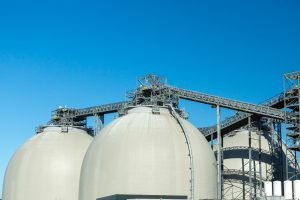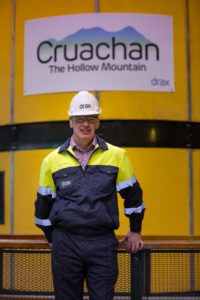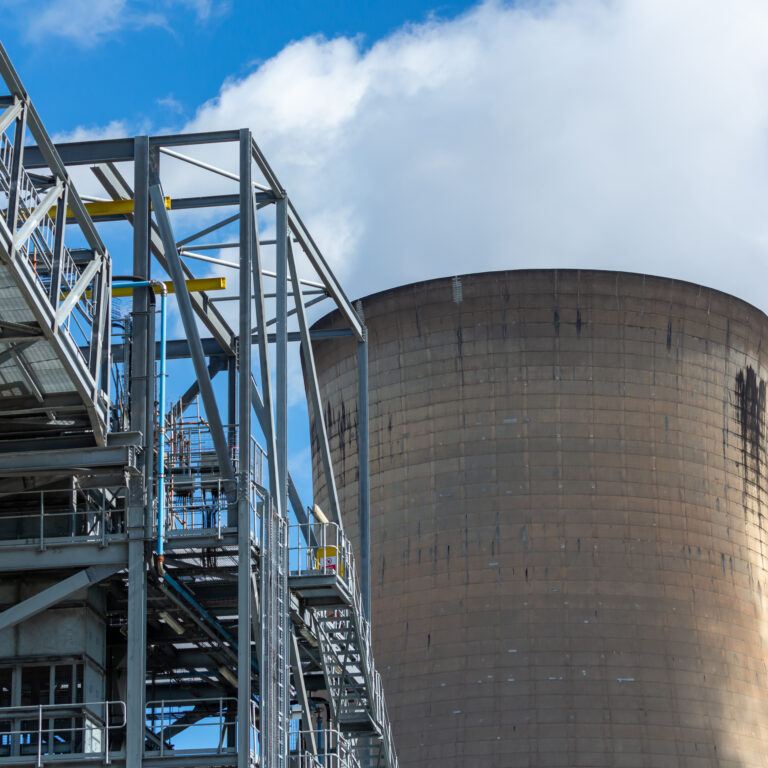Students from Oban High School have visited Drax Group’s iconic ‘Hollow Mountain’ Cruachan Power Station to understand the critical role the facility plays in supporting Scotland’s power system.
Cruachan is an underground pumped hydro storage power station built in a hollowed-out cavern 1km inside Ben Cruachan – Argyll’s highest mountain. Constructed in 1965, its reversible turbines are still at the cutting edge of energy storage technology, enabling the plant to act like a giant water battery.
Its turbines pump water from Loch Awe to an upper reservoir on the mountainside to store excess power from the grid. The stored water is then released back through the turbines to generate power quickly and reliably when demand increases. This process helps stop wind farms being paid to turn off when they are generating excess power, helping Scotland to be greener whilst cutting household energy bills.
Oban High School was one of the first schools to visit the power station since it reopened following the lifting of Covid restrictions. They took part in a tour which supported the work the students are doing to understand how renewable electricity is generated.
Ian Kinnaird in the Cruachan machine hall
Drax’s Scottish Assets & Generation Engineering Director Ian Kinnaird, said: “We work closely with schools to inspire the next generation to study STEM subjects, and these tours are important in firing up students’ imaginations by showing them how renewable electricity is generated.
“Cruachan plays a critical role in stabilising the electricity system, balancing supply and demand by storing excess power from the national grid. When Scotland’s wind turbines are generating more power than we need, Cruachan steps in to store the renewable electricity so it doesn’t go to waste.
“Drax has exciting plans to more than double Cruachan’s generating capacity, a project that will support new green jobs and help bring more renewable power onto the grid.”
The group of 25 students aged between 16 and 18, were taken on a full tour of the site, which included travelling by bus 1km underground to the viewing gallery that looks out onto the huge machine hall which houses the four turbines.
When all four of its generating units are operating at maximum capacity, the plant can supply enough flexible, renewable power for around 800,000 homes.
Peter Bain, Head Teacher at Oban High School, said: “The students had a great day at
Cruachan, learning about how important this unique power station is in supporting the Scottish energy system and the critical role it plays in keeping the power grid safe and stable.
“Visits like this are so valuable because seeing the power station and the scale of the operations is impossible to replicate in a classroom – it really brings the subject to life.”
Prior to the pandemic, Cruachan Power Station near Oban, welcomed more than 50,000 visitors every year, many of whom were students, visiting as part of the renewable energy company’s initiatives to encourage young people to study STEM (Science, Technology, Engineering and Maths) subjects, boosting skills across the region.
In line with lockdown rules, Cruachan suspended its public tours in March 2020 to protect its key workers, who worked around the clock throughout the pandemic to ensure the country had the renewable electricity it needed.
Tours at Cruachan are free to all primary and secondary schools and can be tailored to suit the area of the curriculum teachers are interested in.
Schools interested in organising a tour, should go to [email protected].
Photo caption: The Cruachan Hollow Mountain Visitor Centre
ENDS
Media contacts:
Megan Hopgood
Communications Officer
E: [email protected]
T: 07936 350 175
Editor’s Notes
Drax runs a number of other initiatives to support STEM education and skills in Scotland, including:
- Providing laptops with free internet access
- Free virtual tours of Drax’s power stations
- Virtual STEM workshops in schools
- Work experience placements
- Pumped hydro storage power stations act like giant water batteries, storing excess energy when there is an oversupply of power and then releasing when the country needs it most.
- This is especially useful in supporting wind and solar generation, storing excess renewable power to be used later instead of going to waste.
- A recent report by the Renewable Energy Association (REA) highlighted the policy barriers to deploying long-duration energy storage and suggested ways to address these barriers such as through the introduction of an income floor.
- Despite being a key supporting pillar for intermittent generation from wind and solar power, no new pumped storage plants have been built in Britain since 1984.
- Enough renewable power to supply 800,000 UK homes went to waste in 2020 and 2021 as wind farms were routinely asked to switch off by the Electricity System Operator and there wasn’t enough capacity to ensure this excess renewable power was stored and made available when it was needed.
- Drax recently submitted the planning application to build a new underground pumped hydro storage power station at Cruachan which will more than double the site’s electricity generating capacity.
- The new 600-megawatt (MW) power station will be located inside Ben Cruachan – Argyll’s highest mountain – and increase the site’s total capacity to 1 gigawatt (GW).
About Drax
Drax Group’s purpose is to enable a zero carbon, lower cost energy future and in 2019 announced a world-leading ambition to be carbon negative by 2030, using Bioenergy with Carbon Capture and Storage (BECCS) technology.
Drax’s around 3,000 employees operate across three principal areas of activity – electricity generation, electricity sales to business customers and compressed wood pellet production and supply to third parties. For more information visit www.drax.com
Power generation:
Drax owns and operates a portfolio of renewable electricity generation assets in England and Scotland. The assets include the UK’s largest power station, based at Selby, North Yorkshire, which supplies five percent of the country’s electricity needs.
Having converted Drax Power Station to use sustainable biomass instead of coal it has become the UK’s biggest renewable power generator and the largest decarbonisation project in Europe. It is also where Drax is piloting the groundbreaking negative emissions technology BECCS within its CCUS (Carbon Capture Utilisation and Storage) Incubation Area.
Its pumped storage, hydro and energy from waste assets in Scotland include Cruachan Power Station – a flexible pumped storage facility within the hollowed-out mountain Ben Cruachan.
The Group also aims to build on its BECCS innovation at Drax Power Station with a target to deliver 4Mt of negative CO2 emissions each year from new-build BECCS outside of the UK by 2030 and is currently developing models for North American and European markets.
Pellet production and supply:
The Group has 17 operational pellet plants and developments with nameplate capacity of 4.6Mt, which will increase to c.5Mt once developments are complete.
Drax is targeting 8Mt of production capacity by 2030, which will require the development of over 3Mt of new biomass pellet production capacity. The pellets are produced using materials sourced from sustainably managed working forests and are supplied to third party customers in Europe and Asia for the generation of renewable power.
Drax’s pellet mills supply around 30% of the biomass used at its own power station in North Yorkshire, England to generate flexible, renewable power for the UK’s homes and businesses.
Customers:
Drax is the largest supplier of renewable electricity to UK businesses, supplying 100% renewable electricity as standard to more than 370,000 sites through Drax and Opus Energy.
It offers a range of energy-related services including energy optimisation, as well as electric vehicle strategy and management.
To find out more go to the website www.energy.drax.com




















